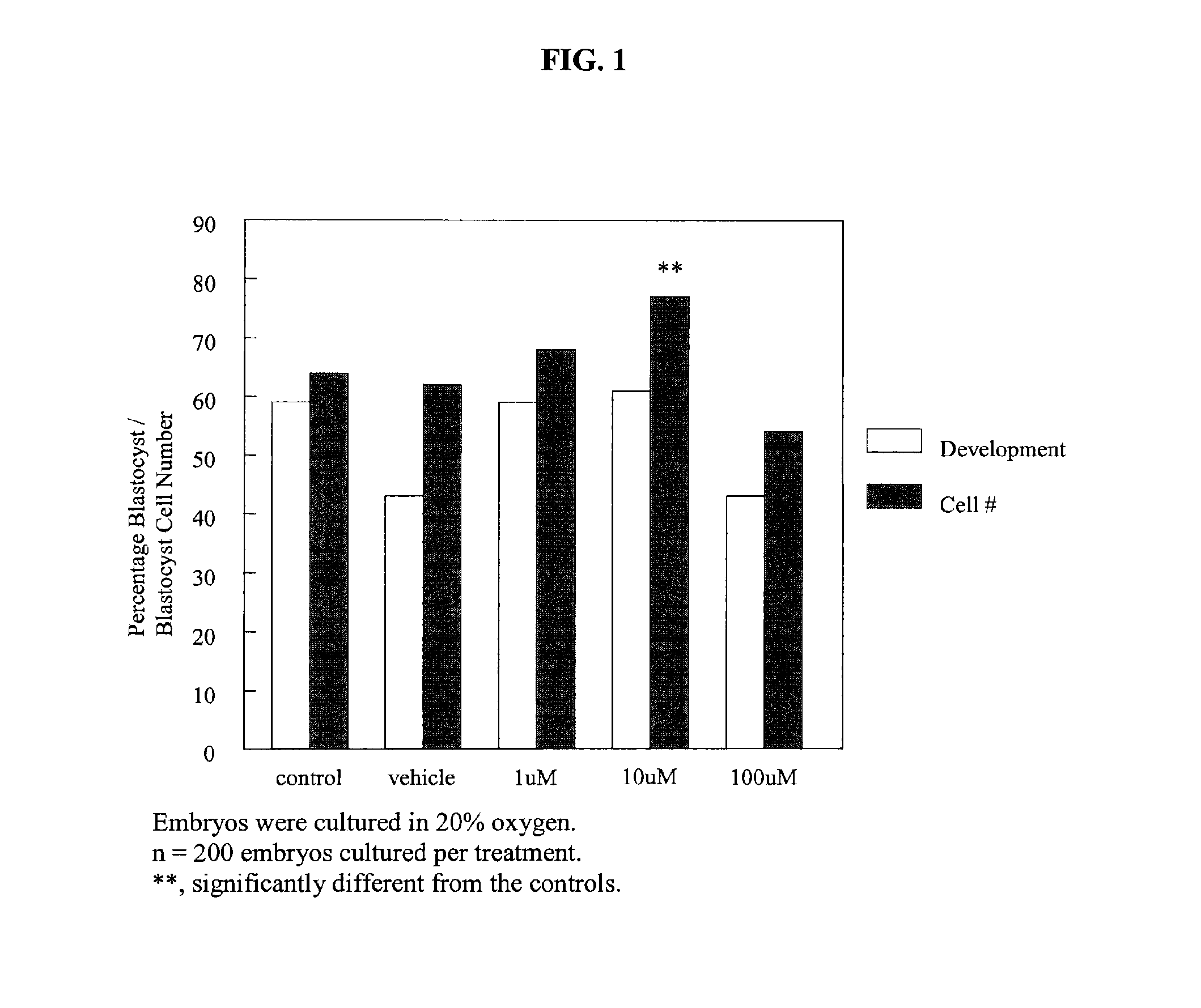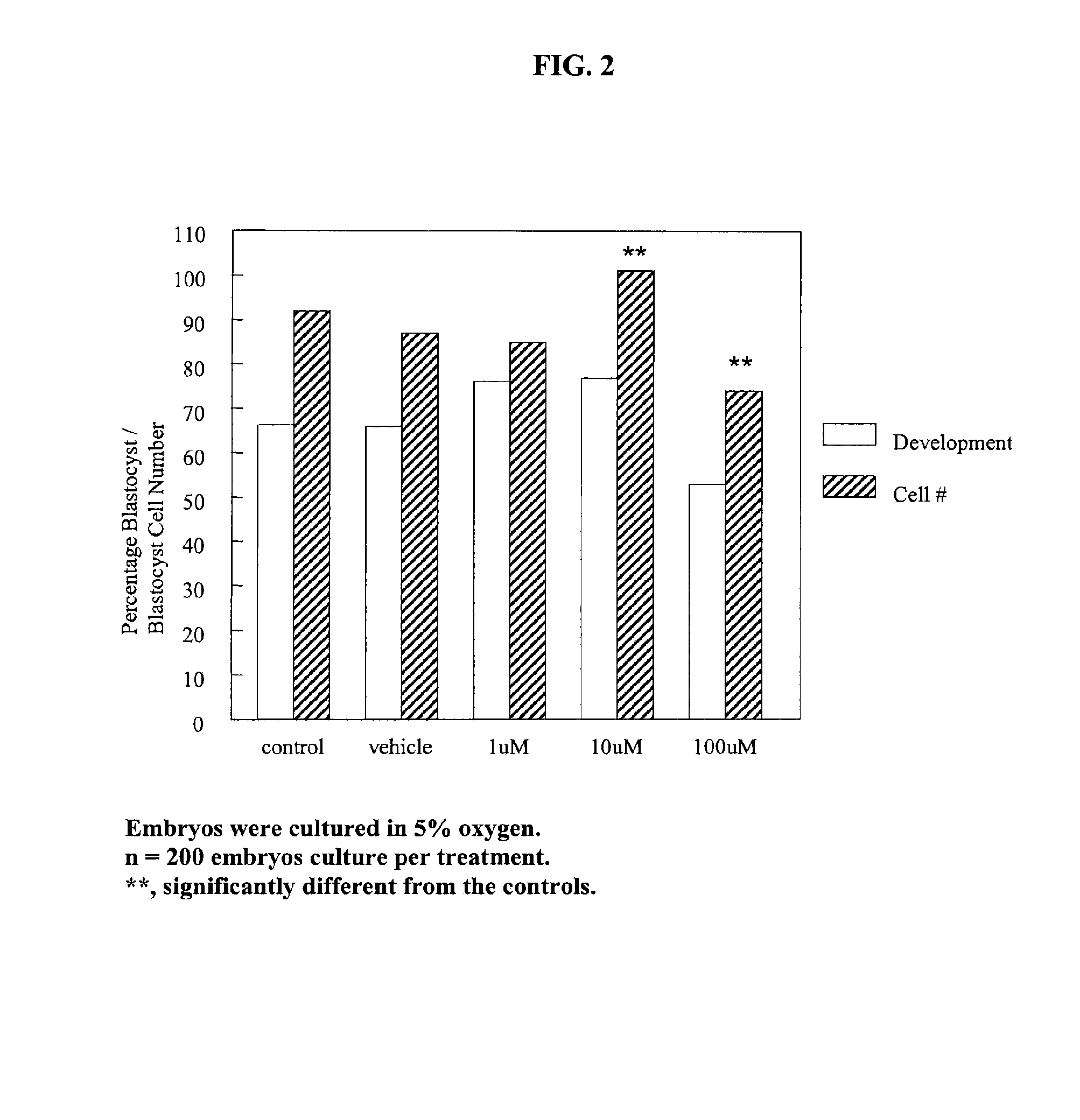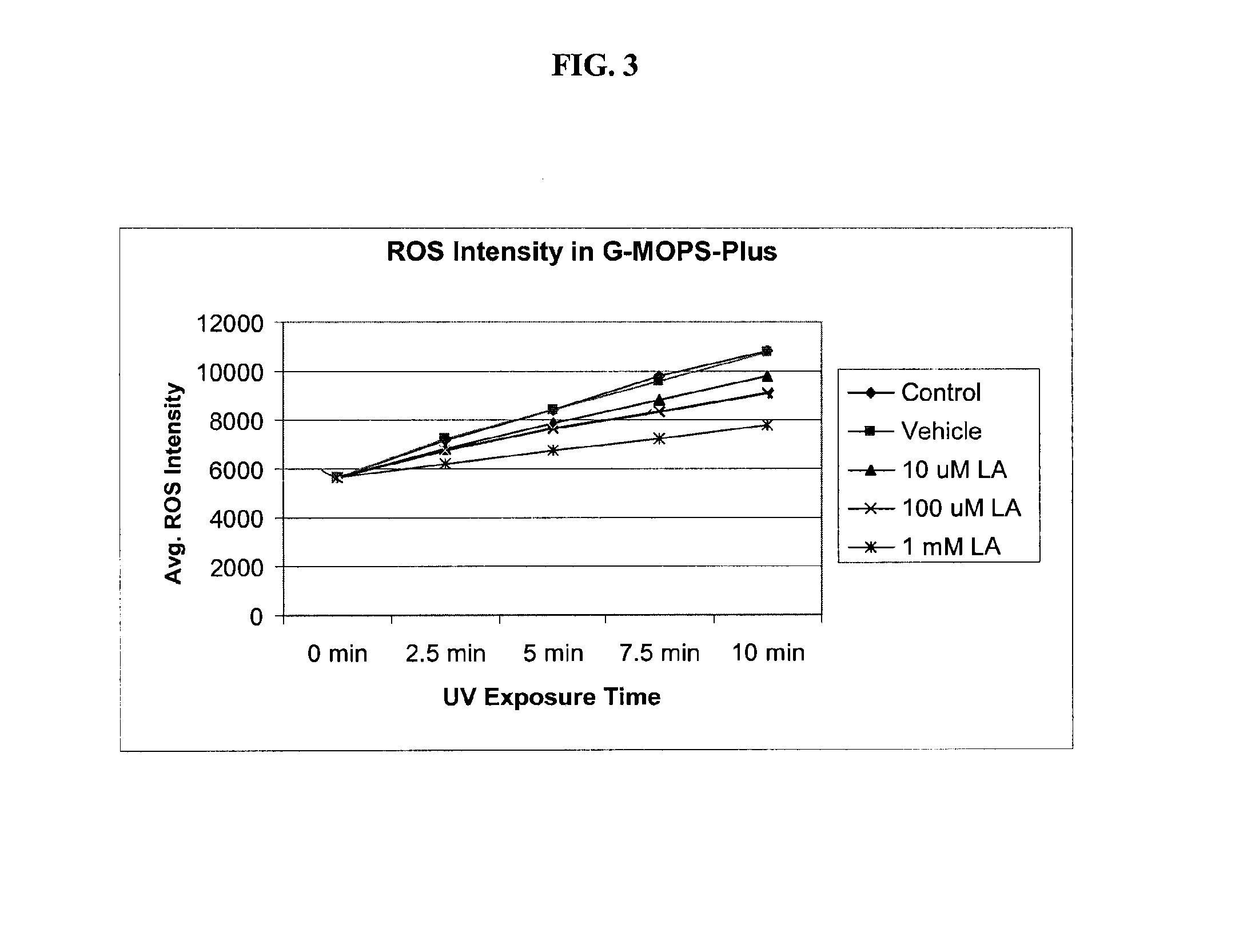Culture media for developmental cells containing elevated concentrations of lipoic acid
a technology of lipoic acid and culture media, which is applied in the field of mammalian in vitro fertilization, can solve the problems of low success rate, low implantation and pregnancy rate, and poor quality of embryo culture media, and achieves the effects of increasing cell numbers, increasing inner cell masses, and increasing survival
- Summary
- Abstract
- Description
- Claims
- Application Information
AI Technical Summary
Benefits of technology
Problems solved by technology
Method used
Image
Examples
example 1
Lipoic Acid Increases Blastocyst Cell Number of Cultured Embryos
[0038]in accordance with the present invention, a culture media composition comprising lipoic acid was used during the development of mouse embryos in vitro. Lipoic acid at a concentration of 5 μM to 40 μM is shown to have significant beneficial effects on mouse embryo development, including a significant increase in blastocyst cell number and cell mass.
[0039]The following procedure was carried out. Lipoic acid was dissolved in ethanol. A 100 mM working solution in 100% EtOH was prepared with appropriate dilutions made to the culture media thereafter (1 μM, 10 μM and 100 μM final concentrations). A vehicle control, equivalent to the dilution of the highest concentration solution (0.1%), was used in all culture experiments. Zygotes were collected from 4-week-old CF1 outbred female mice. Cumulus-enclosed zygotes were collected at 21 h post hCG and denuded with 1 mg / mL hyaluronidase in G-MOPS supplemented with 5 mg / mL huma...
example 2
Lipoic Acid in Sequential IVF Cultures of Day 4 Mouse Embryos
[0041]CF1 mouse embryos were grown in either G1 alone or G1 plus 10 μM lipoic acid. After 48 hours, embryos from both treatment groups were moved to G2. All cultures were incubated in low O2. Compaction rates were assessed and blastocyst developmental rates were measured at 71 and 78 hours. Blastocysts were then differentially stained and counted. The results are shown in Table 8. Addition of lipoic acid to G1 increased inner cell mass number and percentage inner cell mass of total.
TABLE 8Day 4Day 4%Day 3 %blastblastExpandedTreatmentna.m.% a.m.% p.m.on Day 4TEICMTotal% ICMG15881.022.751.719.034 ± 211.4 ± 145 ± 2 25% (Control)G1 +5881.022.465.539.734 ± 2 16 ± 1**50 ± 2**31%**10 μM LASignificantly different from control;*P **P
example 3
Effective Concentration Range for Lipoic Acid on Mouse Embryo Development
[0042]The effective range of lipoic acid concentrations to enhance blastocyst development and cell number was established using CF1 mouse embryos. The results are shown in Table 9. The data show that lipoic acid is effective between 5 to 40 μM in promoting blastocyst development and increasing cell number. Above these concentrations, lipoic acid produces lower blastocyst development by day 5 and lower cell number relative to the control.
TABLE 9Effect of Lipoic acid concentration onCF1 mouse zygote development cultured at 20% oxygenDay 3Day 4Day 5Day 5Total Celln(% compacting)(% Total Blast)(% Total Blast)(% Hatching)Numbercontrol6634.3%50.0%75.0%34.4%80.2 ± 4.9 5 μM LA6238.9%51.6%81.8%40.9%90.2 ± 4.810 μM LA6251.4%62.9%92.7%40.0%91.3 ± 4.720 μM LA6326.5%42.9%73.1%31.3%94.0 ± 7.240 μM LA6722.9%37.3%74.6%28.4%69.4 ± 5.880 μM LA6522.9%4.6%29.7%9.4%34.0
PUM
| Property | Measurement | Unit |
|---|---|---|
| concentration | aaaaa | aaaaa |
| antioxidant properties | aaaaa | aaaaa |
| amphiphilic | aaaaa | aaaaa |
Abstract
Description
Claims
Application Information
 Login to View More
Login to View More - R&D
- Intellectual Property
- Life Sciences
- Materials
- Tech Scout
- Unparalleled Data Quality
- Higher Quality Content
- 60% Fewer Hallucinations
Browse by: Latest US Patents, China's latest patents, Technical Efficacy Thesaurus, Application Domain, Technology Topic, Popular Technical Reports.
© 2025 PatSnap. All rights reserved.Legal|Privacy policy|Modern Slavery Act Transparency Statement|Sitemap|About US| Contact US: help@patsnap.com



